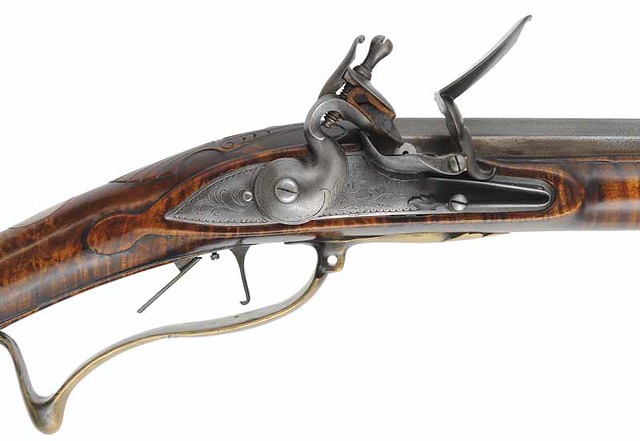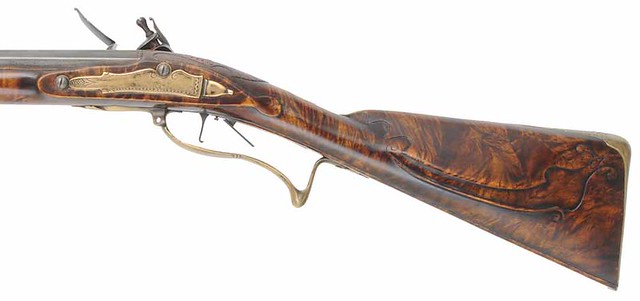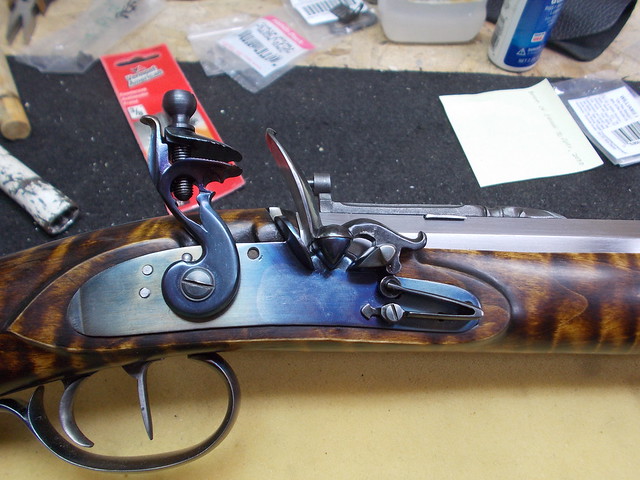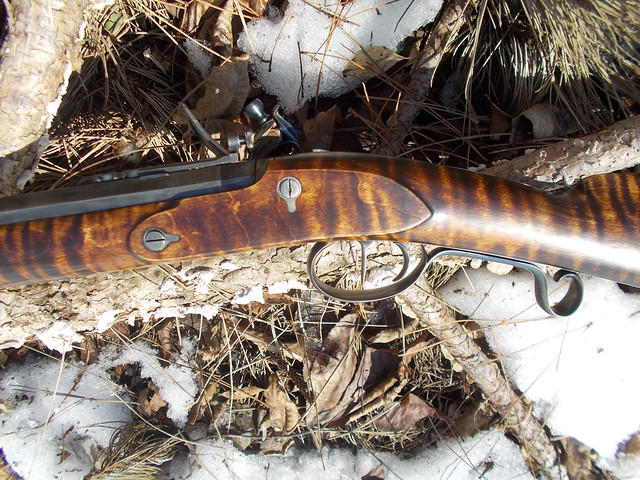azsixshooter
36 Cl.
Well, I thought I was done with the rough sanding on my GPR stock this weekend and ready to get to finish sanding. I noticed that underneath the lock boss there was a lot of extra wood that didn't blend with the forestock and buttstock after I thinned out each of them. So I started getting after it with some 100 grit wrapped around a small metal block to keep nice square edges.
I was making slow progress when I got the bright idea to tap a chisel through that area and speed up the process. It wss going fine until I got a little impatient and rushed one little tap and caught the grain wrong and splintered a big ugly chunk right out of the raised boss that the lock sits in. I'm sure many of you know exactly how I felt at that moment!
So now I'm trying to fix this goof-up and I am taking the thinned portion of the stock below the boss higher up than I would have liked and I'm also having to sand down the boss more than I originally intended to in an attempt to remove this unsightly chip-out.
Today I _carefully_ chiseled the other side and it worked out the way I wanted the lock side to (because I took my time and didn't rush).
I think I will be able to sand out the ding but now I'm concerned that when I put my lock on it won't sit far enough down into the mortise to be flush with the boss. The only thing I can think to do to fix that is to deepen the mortise. But then that seems risky because there are a lot of very fine little thin walls in there and I'm afraid I might inadvertently break something and make it even worse. Or make it too deep and have the pan not line-up with the touch hole. Or some other unforeseen problem I haven't even considered.
I'm mainly just asking if I should bother trying to fix this anymore than I already have and if deepening the lock mortise is a bad idea. Also, if I do deepen the mortise what are the best tools for that kind of delicate work? I was thinking an extremely sharp and small chisel weilded very carefully and maybe a custom hacksaw blade scraper tool like I have seen others mention on here.
This is the first time I've ever worked with walnut and it sure seems like a fussy wood to carve. It seems to want to splinter and chip-out if you look at it the wrong way. It's probably just my inexperience, I imagine skilled gunmakers wouldn't have been using it if it wasn't a good choice. Seems like maple would be a lot easier to work though.
I'll post a few pictures, thanks for any thoughts and God bless,
Steve



I was making slow progress when I got the bright idea to tap a chisel through that area and speed up the process. It wss going fine until I got a little impatient and rushed one little tap and caught the grain wrong and splintered a big ugly chunk right out of the raised boss that the lock sits in. I'm sure many of you know exactly how I felt at that moment!
So now I'm trying to fix this goof-up and I am taking the thinned portion of the stock below the boss higher up than I would have liked and I'm also having to sand down the boss more than I originally intended to in an attempt to remove this unsightly chip-out.
Today I _carefully_ chiseled the other side and it worked out the way I wanted the lock side to (because I took my time and didn't rush).
I think I will be able to sand out the ding but now I'm concerned that when I put my lock on it won't sit far enough down into the mortise to be flush with the boss. The only thing I can think to do to fix that is to deepen the mortise. But then that seems risky because there are a lot of very fine little thin walls in there and I'm afraid I might inadvertently break something and make it even worse. Or make it too deep and have the pan not line-up with the touch hole. Or some other unforeseen problem I haven't even considered.
I'm mainly just asking if I should bother trying to fix this anymore than I already have and if deepening the lock mortise is a bad idea. Also, if I do deepen the mortise what are the best tools for that kind of delicate work? I was thinking an extremely sharp and small chisel weilded very carefully and maybe a custom hacksaw blade scraper tool like I have seen others mention on here.
This is the first time I've ever worked with walnut and it sure seems like a fussy wood to carve. It seems to want to splinter and chip-out if you look at it the wrong way. It's probably just my inexperience, I imagine skilled gunmakers wouldn't have been using it if it wasn't a good choice. Seems like maple would be a lot easier to work though.
I'll post a few pictures, thanks for any thoughts and God bless,
Steve



Last edited:




















